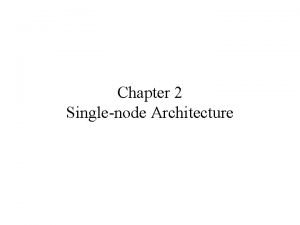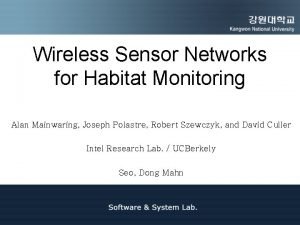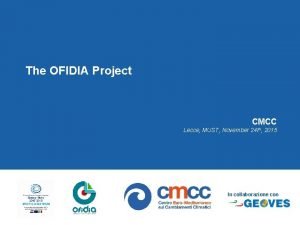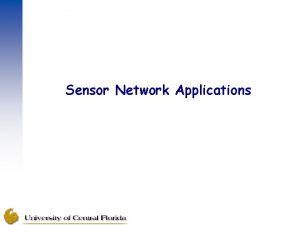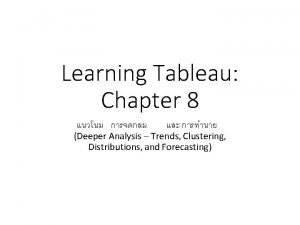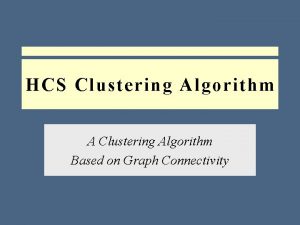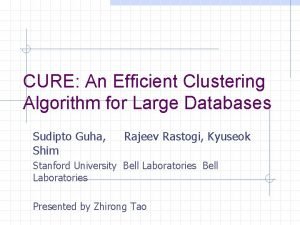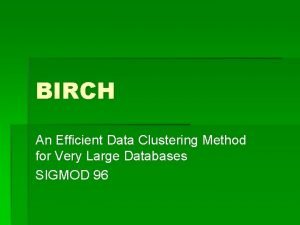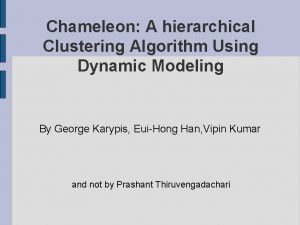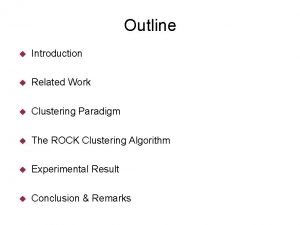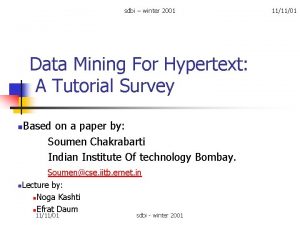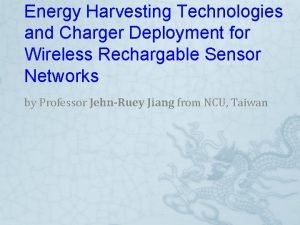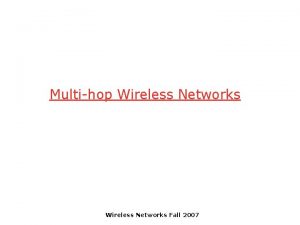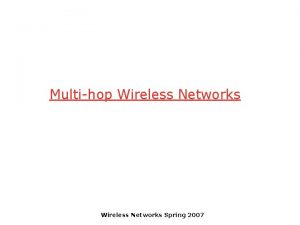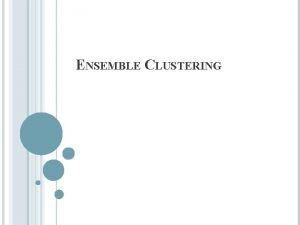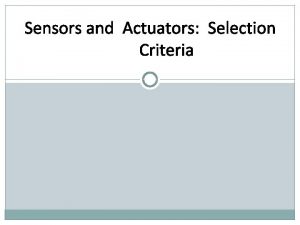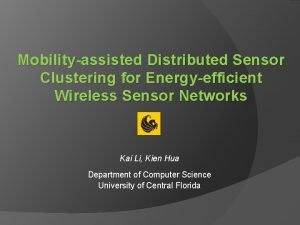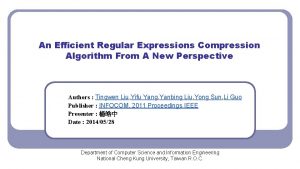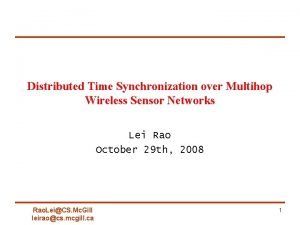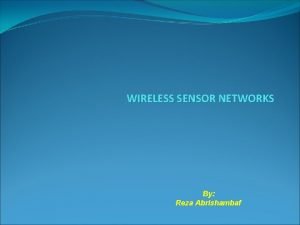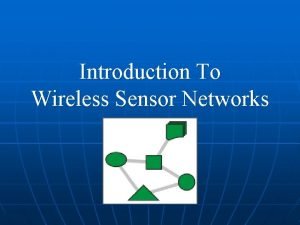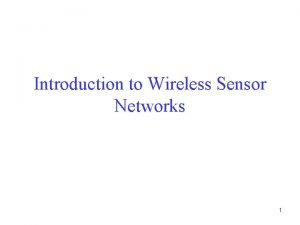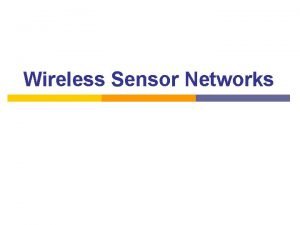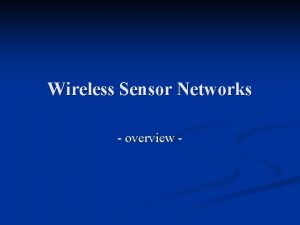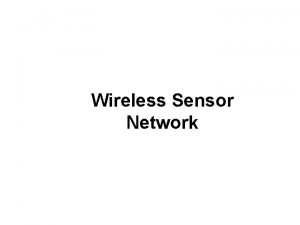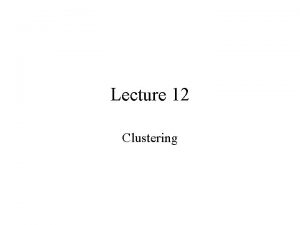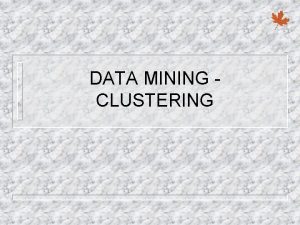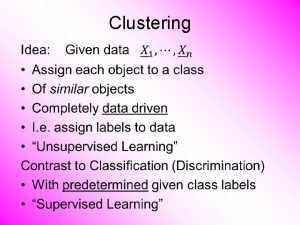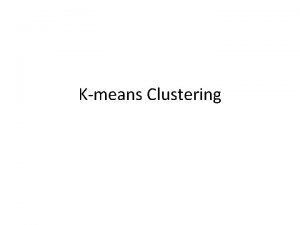Energy Efcient Clustering Algorithm for MultiHop Wireless Sensor





















- Slides: 21

Energy Efficient Clustering Algorithm for Multi-Hop Wireless Sensor Network Using Type-2 Fuzzy Logic 2017 IEEE Sensors Journal Padmalaya Nayak, and Bhavani Vathasava ADVISOR: DR. HO-TING WU Speaker: Jin-wei Lin

Outline • Introduction • Related Work • System Model • Simulation & Result • Conclusions

Introduction • An important design issue in WSNs is to reduce the energy consumption by the use of energy conserving hardware, operating system and communication protocols. • Transmission energy that dominates overall energy consumption.

Introduction • To design a suitable protocol, few of parameters • • discussed here. Self-Organizing Capability Network Lifetime Load balancing Scalability Latency Clustering

Introduction • LEACH & LEACH-C (centralized LEACH) • • Randomized probabilistic model Local information for data transfer Low energy media access control Application specific data processing

• Fuzzy Logic is considered • Simple and flexible to take real time decisions • under uncertain environment. • T 2 FL is more accurately.

Related Work • Hierarchical Routing Protocols Based on Clustering • FL Based Clustering Protocol

• Hierarchical Routing Protocols Based on Clustering • LEACH • • Random number of CHs are too closed CPU cycles are consumed CH is located near to boundary • LEACH-C • Better clusters are formed by base station(BS)

• FL Based Clustering Protocol • CHEF • proximity distance • energy • Better than LEACH 22. 7% • Another method • concentration • centrality

• Fuzzy Logic

System Model • System Assumption • • • All the sensor nodes are static All the sensor nodes have initial equal energy Distance between the BS and the sensor node is computed based on RSSI A stand by CH (SB-CH) is elected in the last level of the chain (nearer to the BS)

System Model • Algorithm

System Model • Fuzzy Logic Model • • 3 parameters Remaining Battery Power Distance to BS Concentration These two functions can be represented (each one) by a Type-1 fuzzy set membership function

System Model

System Model • FOU : footprint of uncertainty • Type 2 FL = Type 1 FL + FOU -> 0, T 1 FL FOU -> 0~1, T 2 FL

Simulation and Result

Simulation and Result


T 1 FL

Conclusions • LEACH provides an opportunity to improve in various parts of the protocol. • T 2 FL Model handles the uncertainties more accurately than T 1 FL model. • T 2 FL model provides better scalability, better lifetime compared to T 1 FL, LEACH single and LEACH multi-hop protocol.

REFERENCES • Padmalaya Nayak, Bhavani Vathasavai , ” Energy Efficient Clustering Algorithm for Multi-Hop Wireless Sensor Network Using Type-2 Fuzzy Logic” , IEEE SENSORS JOURNAL, VOL. 17, NO. 14, JULY 15, 2017 • Padmalaya Nayak, Anurag Devulapalli , ” A Fuzzy Logic-Based Clustering Algorithm for WSN to Extend the Network Lifetime” , IEEE SENSORS JOURNAL, VOL. 16, NO. 1, JANUARY 1, 2016
 Nyt top stories
Nyt top stories L
L Rumus distance
Rumus distance Wireless sensor network protocols
Wireless sensor network protocols Single node architecture in wireless sensor networks
Single node architecture in wireless sensor networks Habitat monitoring sensor
Habitat monitoring sensor Wireless sensor network ppt
Wireless sensor network ppt Forest geove
Forest geove Sensor wireless inc
Sensor wireless inc Wireless sensor networks for habitat monitoring
Wireless sensor networks for habitat monitoring What are wireless devices and the wireless revolution
What are wireless devices and the wireless revolution Tableau clustering algorithm
Tableau clustering algorithm Hcs clustering
Hcs clustering Cure: an efficient clustering algorithm for large databases
Cure: an efficient clustering algorithm for large databases Find centroid of tree
Find centroid of tree Chameleon clustering
Chameleon clustering Rank order clustering algorithm
Rank order clustering algorithm Rock clustering algorithm
Rock clustering algorithm K-means clustering algorithm in data mining
K-means clustering algorithm in data mining Wireless charging wastes energy
Wireless charging wastes energy Energy energy transfer and general energy analysis
Energy energy transfer and general energy analysis Energy energy transfer and general energy analysis
Energy energy transfer and general energy analysis




